Seniors participate in the SAY NO TO FRAILTYTM programme, walking towards improved strength, balance, and confidence through targeted exercises and practical lifestyle changes.

Elderly participants building strength, balance, and confidence through the SAY NO TO FRAILTYTM programme. (Photo: TOUCH Community Services)
For many, the simple act of walking is second nature. But for Ms Alice from TOUCHpoint@Wellington 513, an Active Ageing Centre (AAC) under TOUCH Community Services, every step was a painful and constant reminder of her ongoing battle with arthritis.
As her discomfort grew, a visit to an orthopaedic clinic revealed that a total knee replacement – a procedure that carries multiple risks such as blood clots, infection, and nerve damage – was necessary if the pain worsened. Recovery could even take up to a year.
Frightened, Ms Alice chose to take a different approach – she signed up for a 12-week programme run by Occupational Therapy Associate Professor Tim Xu from the Singapore Institute of Technology (SIT) in partnership with TOUCH. Called SAY NO TO FRAILTYTM (STNF) programme, it helps individuals aged over 60 with signs of pre-frailty and frailty make practical life changes to target treatable risk factors.
The two-hour weekly sessions not only cover a wide range of topics, such as common chronic diseases and management, fall prevention, and healthy diet, but also guide participants through various balance and strength exercises.
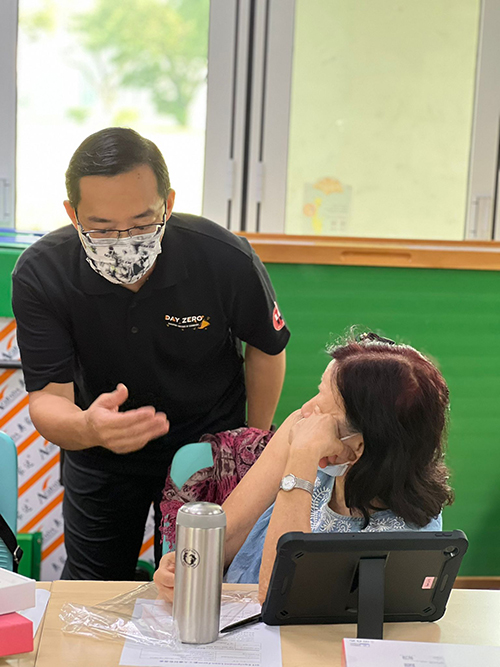
A/Prof Tim Xu (left) offering advice to a participant in the weekly session. (Photo: TOUCH Community Services)
As she consistently worked to build strength in her quadricep muscles and hamstrings, Ms Alice’s knee pain eventually subsided, and she no longer needed the surgery she was afraid of. Since 2023, 20 seniors from TOUCH’s AACs have attended this programme.
Over 130 participants have graduated from the programme since it started in 2018. Across 13 different active ageing and senior care centres nationwide, these seniors have reported improved balance, stronger muscles, and greater self-confidence.
“Seeing the joy in participants for being able to walk for short distances without aids, and eventually longer distances without support, has been delightful,” said Ms Ong Kai Ning, a senior physiotherapist at PCF Sparkle Care @ Shunfu, which has run the programme since March 2024.
“Personally, to see their improvement and receive positive feedback as a facilitator, as well as witness them encouraging one another to be better versions of themselves every week is very rewarding,” Added Ms Ong.
Frailty among the elderly is expected to rise to about 27 per cent in 2030. This is a pressing issue as Singapore will become a super-aged society by 2026, where over one-fifth of the population will be aged over 65.
Intervention to Ward off Frailty
The good news is that frailty – a medical condition characterised by reduced health and function in seniors – can be reversed. This was why the National Healthcare Group's Yishun Health reached out to A/Prof Xu to develop a programme specifically targeting frailty in 2017 using publicly available resources and designed to be concise and easily understood by the elderly. For example, the programme consolidated strength and balance exercises from the Otago Exercise Programme, which is one of the world’s most cost-effective fall prevention programmes. Similarly, the healthy lifestyle tips and fall prevention strategies align with the guidelines set by Singapore’s Ministry of Health.
A/Prof Xu explained: “In Singapore, many seniors may not have access to extensive education, which means they might require more time and support to learn and adopt new behaviours.” After each session, participants are given “homework” to help them apply what they have learnt, which can range from practising the exercises, and adding more protein to their diet to identifying potential hazards in their homes and neighbourhoods that can cause falls.
A/Prof Xu also noted that “Intrinsic motivation is the key to behavioural change.” So before assigning homework in the first week, participants are guided on setting SMART (specific, measurable, achievable, relevant, and time-bound) goals to identify their personal motivation.
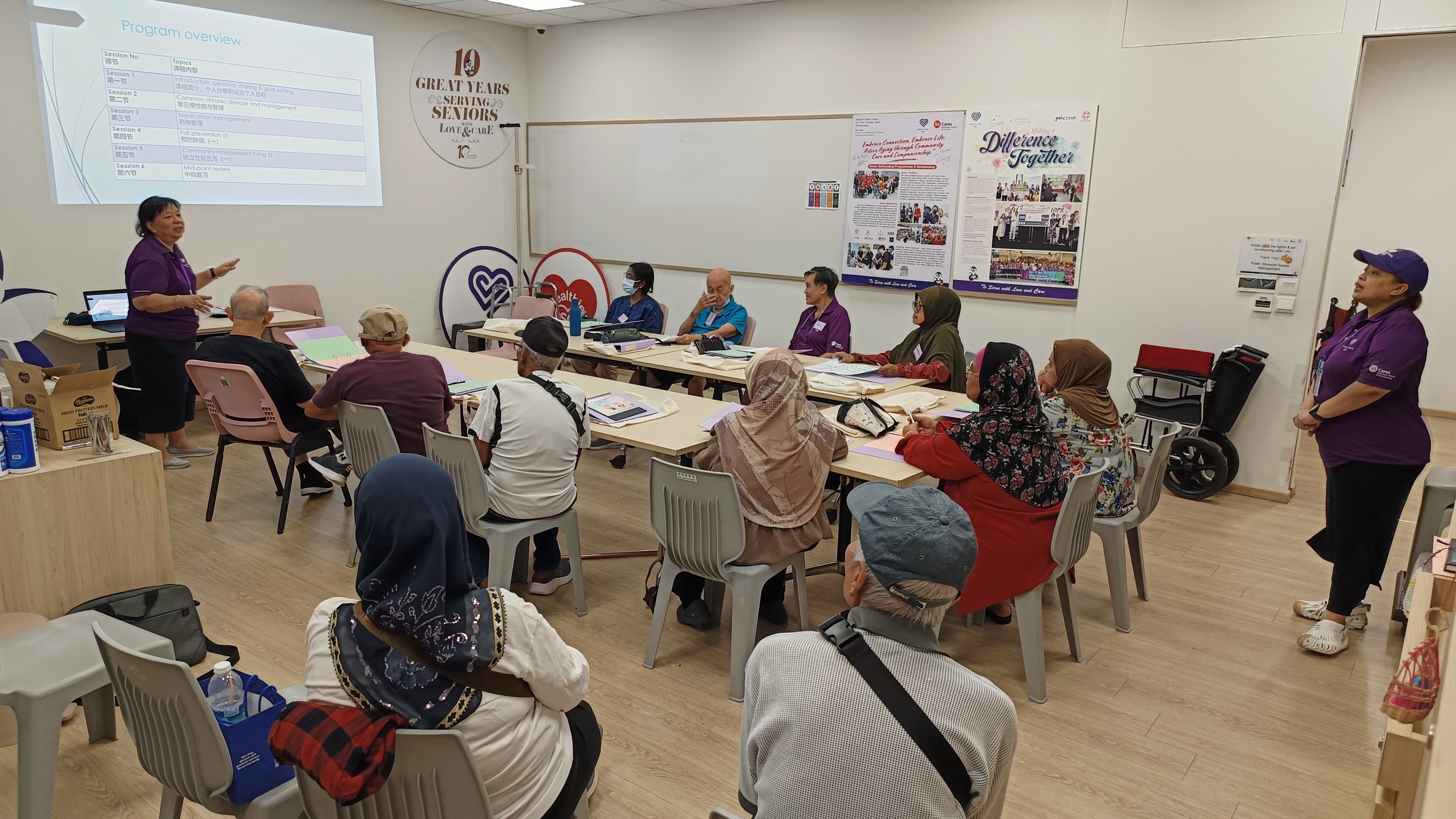
Elderly participants of the programme. (Photo: Blossom Seeds Active Ageing Centre)
Making a Lasting Impact
The programme’s oldest participant, Mr Koh, from Montfort Care GoodLife Studio @Bukit Purmei, is a prime example of how setting clear goals can enhance the experience. His goal was to teach other seniors Sudoku, the number puzzle game he loved dearly.
However, at 92, he could not stand on his own and was at high risk of falling. Hard work and commitment changed that. After 12 weeks in the programme, he was able to perform the chair stand exercise 10 times consecutively – standing up and sitting down from a chair while having his arms crossed over his chest and hands on his shoulders. Since then, he has not missed a session of teaching Sudoku at his care centre in over a year.
Other participants tend to give back to their communities upon graduating as well, whether through volunteering at their care centres or cooking for their neighbours. SAY NO TO FRAILTYTM programme has not only strengthened the self-confidence and muscles of seniors, but also community bonds.
While A/Prof Xu has been at the helm of the programme, he credits its success to others, too. Having to juggle his teaching responsibilities with developing and running the programme, finding the right manpower to help carry the load was crucial.
"Approximately 30 trained facilitators helped run the 12-week SNTF programmes. Additionally, many SIT Physiotherapy and Occupational Therapy students contributed to research and data analysis throughout the process," A/Prof Xu recalled. 'In the early days, my students were my research assistants. They were very helpful in supporting this project from the beginning.'’
The programme has come a long way since 2018, and its organisers want to ensure that it leaves a lasting impact for generations to come. Even as they aim to expand SNTF programme to 30 centres by 2028, A/Prof Xu makes clear that “the programme needs to be sustained and not be diluted”.
In other words, quantity should not compromise quality. “I will get old one day, and I want to make sure that there is a good programme out there that can take care of me,” he quipped. “That’s my hope.”
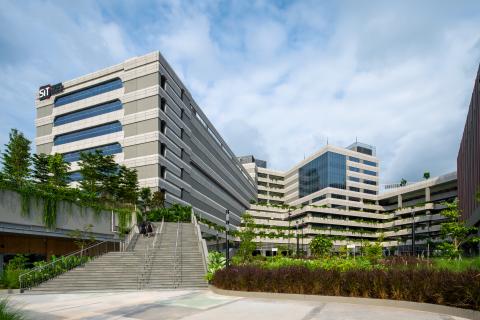
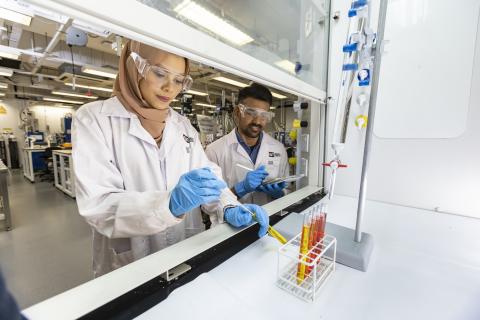




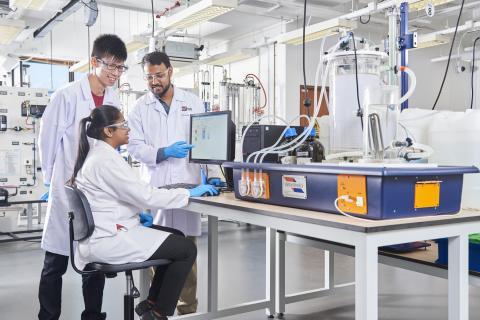
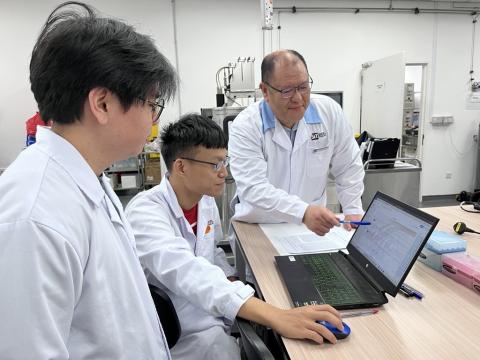


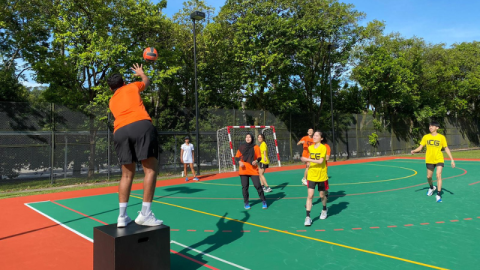




![[FA] SIT One SITizen Alumni Initiative_Web banner_1244px x 688px.jpg](/sites/default/files/2024-12/%5BFA%5D%20%20SIT%20One%20SITizen%20Alumni%20Initiative_Web%20banner_1244px%20x%20688px.jpg)


